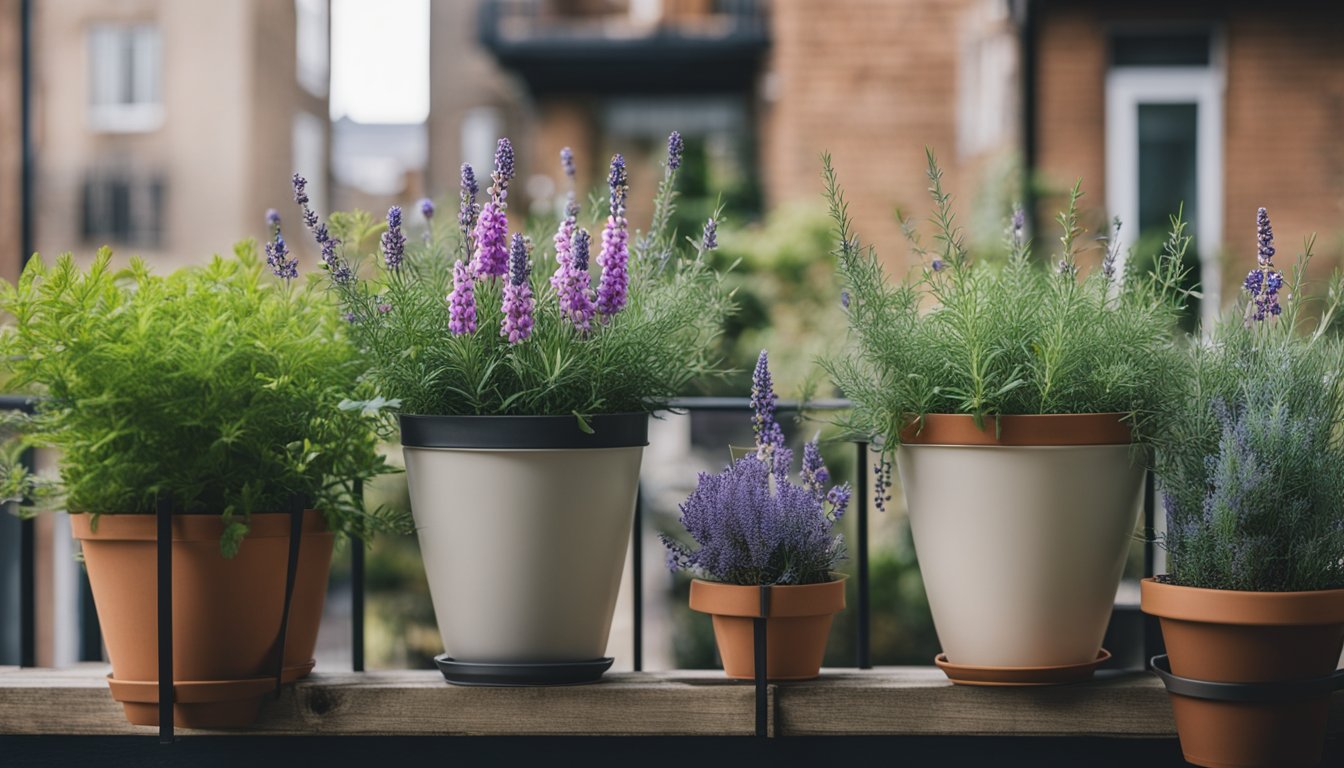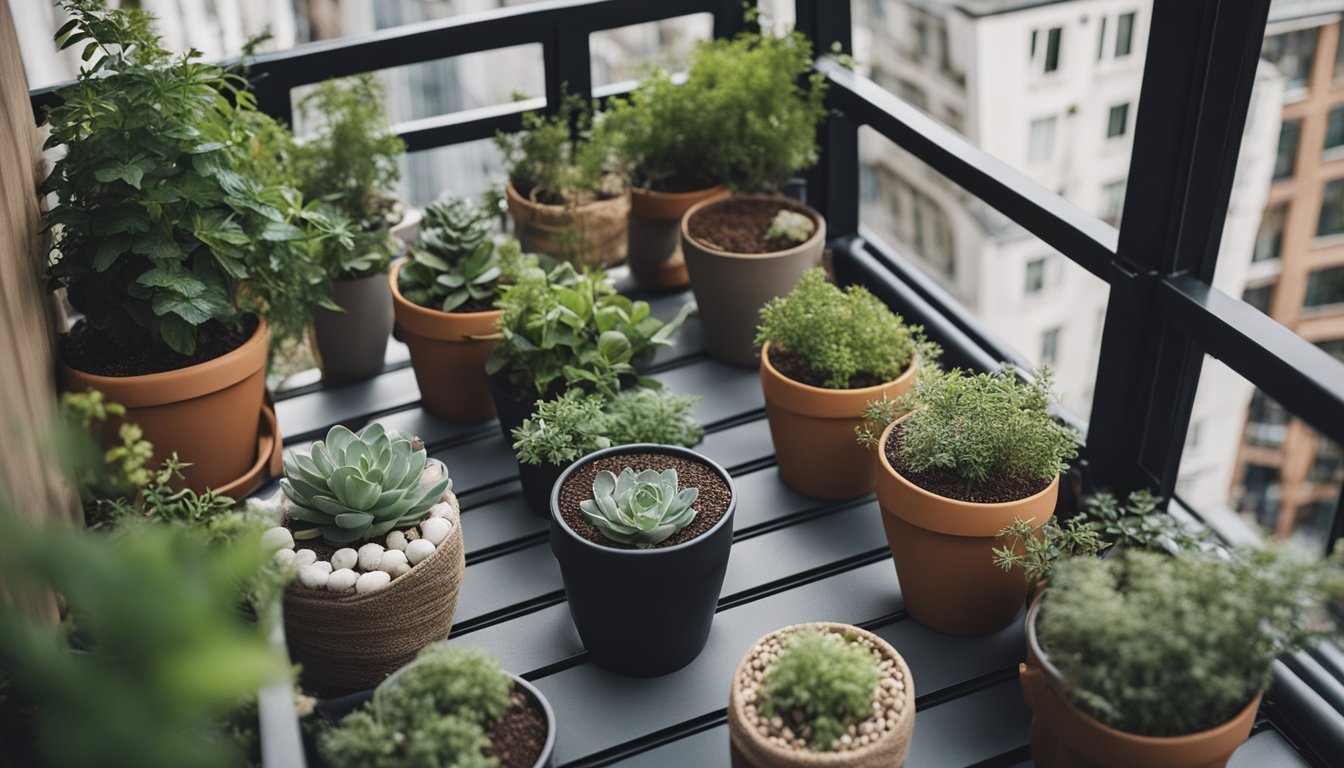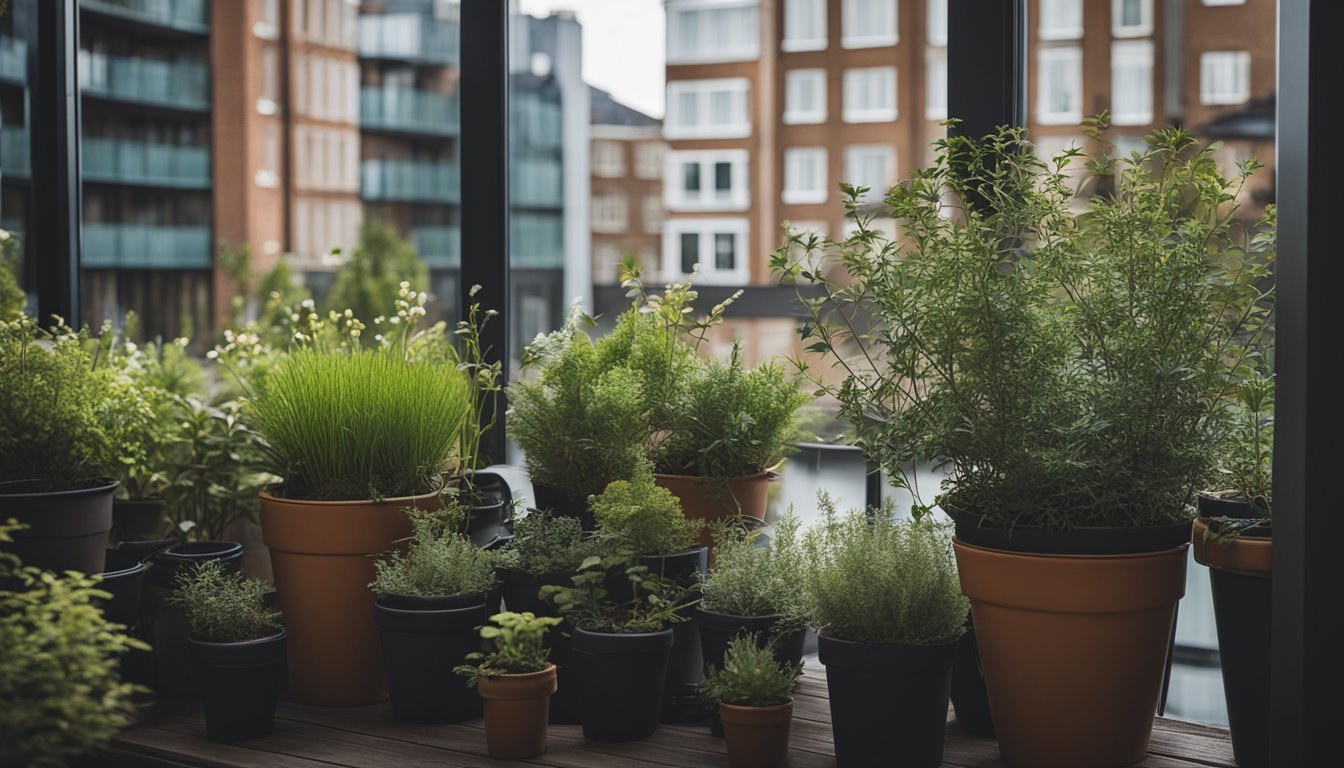Late updated: 26 Apr 2025 15:04
Written by: Emily Thornton
Native UK Plants for Urban Balcony Gardens: A Comprehensive Guide
Creating an urban balcony garden can be both rewarding and sustainable, especially when we use native UK plants. These plants not only enhance the aesthetic appeal of our outdoor spaces but also support local wildlife, making them ecological champions in urban environments. By choosing native species for our balcony gardens, we're contributing to biodiversity and offering essential habitats for insects and birds.

Balcony gardens are an excellent way for city dwellers to enjoy nature and cultivate a green oasis. Some native plants are perfectly suited for pots and containers, providing year-round interest. From vibrant wildflowers to sturdy shrubs, these plants are adaptable to urban conditions and can thrive in small spaces.
With careful selection and design, using native UK plants, we can create a thriving balcony garden that is both beautiful and environmentally friendly. Our choices can make a significant difference by providing a natural haven amidst urban landscapes, proving that even the smallest of spaces can support ecological balance.
Key Takeaways
- Native UK plants enhance biodiversity in urban balcony gardens.
- These plants thrive in limited spaces and support local wildlife.
- Using them helps create a sustainable, ecological urban environment.
Best Native UK Plants for Urban Balcony Gardens

For urban balcony gardens in the UK, choosing native plants can enhance biodiversity while also offering aesthetic appeal. Focused selection of flowering plants, herbs, and small trees can transform balconies into vibrant, eco-friendly spaces.
Top Flowering Plants and Perennials
Crocus and roses make excellent additions to balconies, providing bursts of colour and seasonal interest. Crocus flourish in containers with their cheerful blooms appearing in early spring.
Roses, particularly compact or dwarf varieties, can be grown in larger pots and offer fragrant flowers throughout the summer. Lavender is also an option; its aromatic blooms attract pollinators, making it a popular choice.
These flowering plants require regular watering and sunny positions to thrive, making them ideal for sunny balconies.
Ideal Herbs and Kitchen Plants
A range of native herbs can be cultivated successfully in containers. Parsley, sage, rosemary, and thyme are hardy choices that cater to both culinary and ornamental needs. These herbs grow well in small spaces, and their aromatic qualities can be enjoyed when used in cooking.
Additionally, bay trees can be potted and pruned to maintain an appropriate height for balcony settings.
Most of these herbs favour well-drained soil and good sunlight, and they demand minimal maintenance, making them perfect for aspiring balcony gardeners.
Native Shrubs, Grasses, and Trees
When considering native shrubs and small trees, species like the holm oak can provide structure and greenery. This evergreen tree remains compact and offers privacy with its dense foliage.
Carex varieties, or sedge grasses, add texture and resilience, being well-suited for urban containers.
Another option is to grow small rowan or crabapple trees, which display colourful berries and attract wildlife. These plants flourish in well-drained soil and provide seasonal interest with their autumn foliage.
Implementing shrubs, grasses, and small trees enhances the diversity and ecological value of a balcony garden, making it not only visually appealing but environmentally friendly as well.
Design and Care for Balcony Gardens Using Native Plants

Creating an urban balcony garden with native UK plants involves focusing on optimal planting techniques, enhancing biodiversity to attract pollinators, and carefully managing environmental challenges. Understanding these aspects helps ensure a vibrant and sustainable outdoor space.
Optimal Planting and Good Drainage
When planting native species on balconies, choosing the right containers is crucial. We recommend selecting pots that are at least 16 inches deep, enabling roots to establish robust systems. Good drainage is essential to prevent root rot, especially in an urban setting with variable weather conditions. Use pots with drainage holes and add a layer of gravel or small stones at the bottom.
Native plants such as lavender and thyme thrive in well-aerated soil, so incorporating a mix of sand and compost can be beneficial. Climbing plants like passion flower or other climbers can be trained along trellises to maximise vertical space, creating a lush and picturesque garden environment despite the space constraints.
Encouraging Biodiversity and Pollinators
Biodiversity on balconies attracts pollinators, enhancing the vibrancy of your garden. By incorporating scented flowers from native plants, we can draw in butterflies and other pollinators. This not only supports local wildlife but also helps in pollination and seed production. Planting a mix of flowering plants ensures continuous blooms and supports diverse fauna throughout the seasons.
Our choice of native plants is critical to maintaining this biodiversity. Select species known for their pollinator-friendly characteristics. For example, creeping thyme and wild marjoram are excellent for inviting bees and butterflies. Diverse planting fosters a mini-ecosystem on our balcony, balancing aesthetics with ecological benefits.
Managing Pests and Microclimate Challenges
Urban balconies face unique challenges such as pests and dramatic microclimate variations. Addressing these requires mindful strategies. Natural pest deterrents, like companion planting and introducing ladybirds, can be effective. Succulents, with their resilience, can help stabilise the microclimate, reducing the impact of climate extremes exacerbated by climate change.
Our plant care routine must adapt to changing conditions. Regular observation helps in quickly identifying potential pest issues. Utilising barriers like privacy screens can also serve dual purposes: offering wind protection to delicate plants and creating a controlled microclimate to enhance growth conditions. Fertilising with organic compost boosts plant health and resilience against such challenges, ensuring our urban balcony garden remains thriving and robust.
Frequently Asked Questions

Exploring native UK plants for urban balcony gardens can enhance biodiversity, offer aesthetic appeal, and require minimal upkeep. Here, we address common questions about selecting and maintaining plants suited to small, challenging spaces.
Which UK native plants thrive in the constrained space of urban balconies?
Smaller plants such as wild strawberries and primroses are ideal for confined spaces. They fit well into pots and containers, allowing efficient use of limited balcony real estate. These plants are not just good for décor; they also foster local wildlife.
What low-maintenance native plants can survive on a sunny balcony?
For sunny balconies, we recommend opting for hardy species like wallflowers and thyme. These plants thrive in bright conditions and require minimal care, making them suitable for those who seek beauty without constant upkeep. Their natural resilience allows them to flourish even with infrequent watering.
Which evergreen plants native to the UK are suitable for year-round balcony greenery?
Evergreen options such as holly and yew are perfect for maintaining year-round greenery. These robust plants withstand the changing seasons, providing continuous foliage and visual interest. They are also beneficial to urban wildlife, offering shelter throughout the year.
How can one cultivate native UK plants on a balcony with limited sunlight?
On shady balconies, ferns and foxgloves are excellent choices. These plants naturally favour low-light conditions and maintain their health without direct sunlight. By selecting shade-tolerant species, we can still achieve a lush garden atmosphere without the need for constant sun.
What are the best options for planting on balcony railings using native UK flora?
To make the most of balcony railings, trailing plants like ivy are superb. They can cascade over the edges, adding visual depth and softening the structure of the balcony. Moreover, their growth patterns make them easy to manage in elevated, narrow settings.
Can you suggest native UK plants that are ideal for apartment balconies in urban environments?
In urban balconies, where space and resources are limited, cherry laurels and lavender thrive well. These plants adapt easily to restricted environments, providing colour and scent without demanding extensive maintenance. Their adaptability makes them perfect companions for city-dwelling gardeners.
